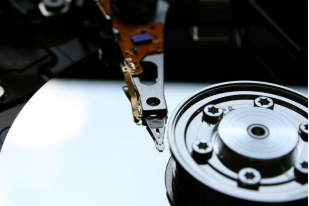In the grand picture of modern manufacturing, efficiency, precision, and flexible production have become core themes. The Profile Machining Center, a CNC machine tool specifically designed for the efficient and complex machining of long metal profiles (such as aluminum and steel extrusions), is profoundly transforming the landscape of the machining field through its revolutionary innovative applications and continuously driving the upgrade and development of numerous industries.
I. From Traditional to Modern: An Efficiency Revolution
Traditional profile machining often relies on multiple equipment such as drill presses, milling machines, and saws to complete processes in separate steps, requiring multiple setups and repositioning. This method not only occupies a large floor space and requires more labor but, more importantly, multiple setups lead to cumulative errors, affecting machining accuracy. Low efficiency had become a bottleneck for large-scale production.
The emergence of the Profile Machining Center has thoroughly solved this pain point. It integrates multiple functions such as milling, drilling, tapping, sawing, chamfering, and even 3D machining into one unit, allowing all sides of a profile to be processed in a single setup. This “one-stop” machining mode dramatically reduces non-cutting time, improving production efficiency and machining accuracy, and is a typical embodiment of intelligent manufacturing.
II. Innovative Applications: Empowering High-End Manufacturing
The innovative applications of Profile Machining Centers have penetrated various high-end manufacturing fields:
New Energy Vehicles & Rail Transportation: Under the major trend of lightweighting, aluminum alloy profiles are core materials for battery pack casings, body frames, chassis components, as well as high-speed rail and subway car bodies. Profile Machining Centers can efficiently and precisely complete all machining operations for these large, complex structural parts, ensuring product safety and reliability.
Aerospace: Stringers, keels, door frames, and other components in aircraft extensively use high-strength aluminum alloys and composite profiles. The multi-axis linkage and high-speed milling technologies of machining centers can produce complex curved surfaces and lightweight structures that meet strict aerodynamic requirements.
Industrial Automation & Robotics: As one of the largest application fields for aluminum profiles, the frames, rails, and brackets of automated equipment all rely on profile machining. Machining centers enable rapid drilling, tapping, and precision milling, providing a solid foundation for modular and customized equipment assembly.
Building Curtain Walls & Solar Energy: The supports for large-scale building glass curtain walls and the mounting frames for photovoltaic power generation systems require a vast number of precise holes and slots to be machined into profiles. Profile Machining Centers ensure the consistency and stability of mass-produced products through automated production.
III. Development Trends: Intelligence and Flexibility
Future Profile Machining Centers will develop towards deeper intelligence and flexibility:
Integration & Automation: Integration with automatic loading/unloading systems (AGV/gantry robots) and automated storage systems to form unmanned flexible manufacturing systems (FMS) for 24/7 continuous production.
Digitalization & IoT (Internet of Things): Equipped with sensors to monitor tool wear, spindle load, machining accuracy, and other data in real-time. Cloud platforms enable big data analysis for predictive maintenance and process optimization, improving Overall Equipment Effectiveness (OEE).
High Precision & High Efficiency: The application of advanced drive technologies like linear motors and torque motors, along with higher-speed electric spindles, will continue to enhance processing speed and surface finish quality.
Flexible Production: Powerful CNC systems can easily store and manage hundreds of machining programs, allowing for quick changeovers between product types, perfectly adapting to the needs of small-batch, high-mix customized production.
Conclusion
The Profile Machining Center is no longer merely a simple processing tool but a critical node connecting upstream and downstream in the modern smart factory. Through technological integration and innovative application, it efficiently and accurately transforms design blueprints into real products,unleashing productivity. As Industry 4.0 deepens, the Profile Machining Center will undoubtedly continue to evolve, injecting innovation momentum into the modern machining field and becoming a vital engine driving the transformation and upgrading of “Made in China” into “Intelligent Manufacturing in China.”

